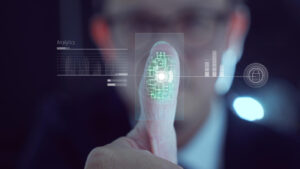Keeping up with the ever-changing landscape of payments continues to be a challenge for merchants and consumers alike feels Bahaa Abdul Hadi. Now, wearable payments are fast becoming one of the most popular forms of payment transactions due to their convenience and secure nature, which is enabled by biometric technology. So what does this mean for businesses looking to utilize these services? In this blog post, we’ll explore how biometrics in wearable payments can provide robust security while transforming the future of digital payment transactions.
Biometric authentication is emerging as a key technology in the payments industry. It has been gaining traction with the rise of wearable payments and contactless transactions, allowing for greater levels of security while removing the need for traditional identification methods. With its ability to recognize individual fingerprints, facial features, voice patterns, and even iris scans, this type of technology provides an extra layer of protection for payments, online banking, and other sensitive transactions.
Wearables are also becoming increasingly popular in the payment industry due to their convenience and ease of use. With biometric authentication integrated into these devices, users can securely complete their purchases without having to enter passwords or pins. For example, Android Pay now uses facial recognition technology to authorize transactions, while Apple Watch users can confirm their purchases with a simple fingerprint scan. This technology is making it easier and more secure for people to make payments in person or online.
In addition to providing an additional layer of security, biometric authentication also offers a number of other benefits. By eliminating the need for passwords and pins, users no longer have to worry about forgetting them or having their accounts compromised by cybercriminals. It also simplifies the authentication process, making it easier and faster to complete transactions.
Overall, biometrics in wearable payments is transforming the future of payment transactions. With its enhanced security measures and convenient user experience, more and more people are turning to these technologies for secure, fast payments. As technology continues to advance, we can expect to see more innovative solutions and applications emerge that will make payments even easier and safer for consumers.
Conclusion
All in all, the potential of biometrics in wearable payments is boundless and incredibly exciting. As technology continues to evolve, so too will the possibilities this new payment method has to offer us. Although the technology is still relatively new and yet to be completely adopted, it is quickly becoming a convenient and secure way to access your funds. As time goes on, we should anticipate more banks, merchants, and financial institutions jumping on board this wave of revolutionizing transactions. Wearable biometric payments are not only transforming the world of finance but also creating opportunities for innovation—ultimately changing the future of payments as we know it!
The blog has been authored by Bahaa Abdul Hadi and has been published by the editorial board of Identity Herald. For more information, please visit www.identityherald.com




